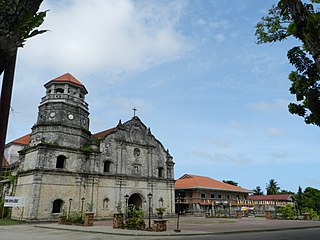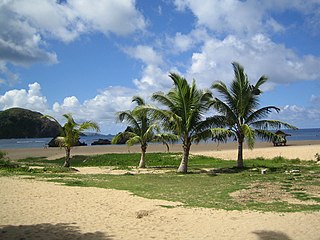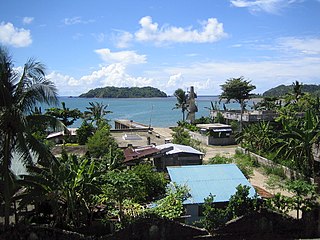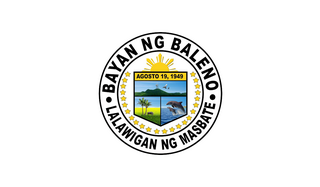
Casiguran, officially the Municipality of Casiguran, is a 4th class municipality in the province of Sorsogon, Philippines. According to the 2020 census, it has a population of 35,602 people.

Virac, officially the Municipality of Virac, is a 1st class municipality and capital of the province of Catanduanes, Philippines. According to the 2020 census, it has a population of 76,520 people.

Matnog, officially the Municipality of Matnog, is a 3rd class municipality in the province of Sorsogon, Philippines and is the southernmost part of Luzon. According to the 2020 census, it has a population of 41,989 people.

Cabugao, officially the Municipality of Cabugao, is a 1st class municipality in the province of Ilocos Sur, Philippines. According to the 2020 census, it has a population of 38,884 people.

Labo, officially the Municipality of Labo, is a 1st class municipality in the province of Camarines Norte, Philippines. According to the 2020 census, it has a population of 109,245 people.

Panay, officially the Municipality of Panay, is a 3rd class municipality in the province of Capiz, Philippines. According to the 2020 census, it has a population of 48,890 people.

Bagamanoc, officially the Municipality of Bagamanoc, is a 5th class municipality in the province of Catanduanes, Philippines. According to the 2020 census, it has a population of 11,086 people.

Baras, officially the Municipality of Baras, is a 5th class municipality in the province of Catanduanes, Philippines. According to the 2020 census, it has a population of 13,484 people.

Caramoran, officially the Municipality of Caramoran, is a 3rd class municipality in the province of Catanduanes, Philippines. According to the 2020 census, it has a population of 32,114 people.

Gigmoto, officially the Municipality of Gigmoto, is a 5th class municipality in the province of Catanduanes, Philippines. According to the 2020 census, it has a population of 8,712 people.

Pandan, officially the Municipality of Pandan, is a 4th class municipality in the province of Catanduanes, Philippines. According to the 2020 census, it has a population of 21,473 people.

Panganiban, officially the Municipality of Panganiban, is a 5th class municipality in the province of Catanduanes, Philippines. According to the 2020 census, it has a population of 9,713 people.

San Andres, officially the Municipality of San Andres, is a 3rd class municipality in the province of Catanduanes, Philippines. According to the 2020 census, it has a population of 38,480 people.

San Miguel, officially the Municipality of San Miguel, is a 5th class municipality in the province of Catanduanes, Philippines. According to the 2020 census, it has a population of 15,680 people.

Viga, officially the Municipality of Viga, is a 4th class municipality in the province of Catanduanes, Philippines. According to the 2020 census, it has a population of 22,869 people.

Baleno, officially the Municipality of Baleno, is a 4th class municipality in the province of Masbate, Philippines. According to the 2020 census, it has a population of 28,855 people.

Bato, officially the Municipality of Bato, is a 3rd class municipality in the province of Camarines Sur, Philippines. According to the 2020 census, it has a population of 52,155 people.

Lagonoy, officially the Municipality of Lagonoy, is a 2nd class municipality in the province of Camarines Sur, Philippines. According to the 2020 census, it has a population of 56,714 people.

Ragay, officially the Municipality of Ragay, is a 1st class municipality in the province of Camarines Sur, Philippines. According to the 2020 census, it has a population of 59,770 people.

Siruma, officially the Municipality of Siruma, is a 4th class municipality in the province of Camarines Sur, Philippines. According to the 2020 census, it has a population of 19,419 people.


























